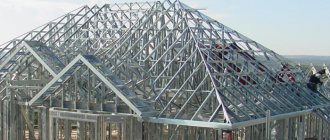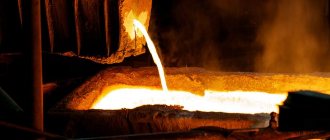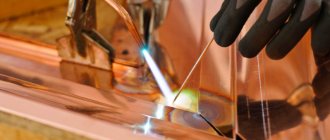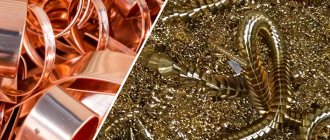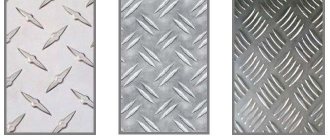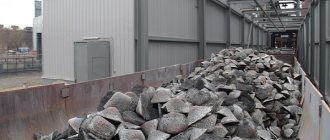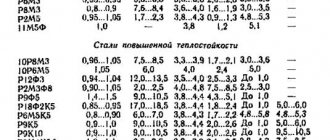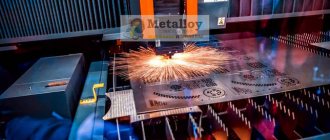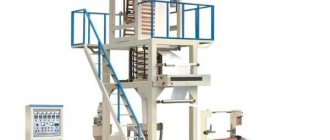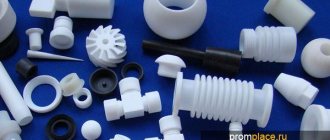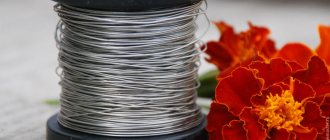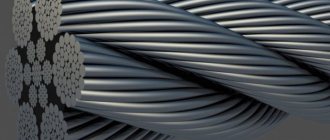What is
Copper is a pinkish metal with a golden-metallic luster. Element No. 29 of the Mendeleev periodic table. International designation: Cu (Cuprum).
Pure metal is soft, so it is often used with impurities. Plastic: stretches to micron diameters.
In air it becomes covered with a film, acquiring a yellowish-red tint. Thin plates are greenish-blue when exposed to light.
According to the official classification, it is classified as a heavy non-ferrous metal. This group also includes lead, zinc, tin, and nickel.
Magic
In the past it was considered as a solar metal.
Pure copper in any form is an ancient and widespread remedy of a general healing and preventive nature[4]. Copper is primarily used:
- as a good tonic for the liver, spleen and lymphatic system;
- people who tend to gain weight, retain water, and have lymphatic growths;
- in the treatment of anemia.
Most often, copper rings and bracelets are used for medicinal purposes. It is believed that it is most effective for health to wear copper on the left side for right-handers, and on the right for left-handed people.
In the Middle Ages, it was believed that copper dispels any spell and grants the ability to detect witches and sorcerers.
Copper is used to attract love, and it is often recommended to wear emeralds set in copper for this purpose.
Copper is the metal of good luck and can be used to attract good luck in combination with any of the good luck gemstones.
Copper tubes connected to a quartz crystal are used by modern magicians to make magic wands. They are sometimes wrapped in leather or other protective material and serve to “direct the energy correctly.” Copper is also worn during ritual as a means of enhancing the magician's ability to "direct energy towards a magical goal."
Story
Copper is one of the first metals that humanity dealt with. This was facilitated by the advantages: high prevalence, availability, relatively low melting point.
People appreciated the benefits of copper eight thousand years ago.
The Copper Age began immediately after the Stone Age:
- Copper artifacts dug up in the territory of modern Turkey are recognized as the oldest. These are beads and decorative overlays.
- Cutting tools and utensils were made from metal.
- The history of the discovery of copper mines in Rus' begins in the Urals two thousand years before the new era. Then there were the Caucasus, Altai, Siberia.
- Industrial processing using bronze began in the 14th century. Cannons and bells were cast from the alloy.
The Tsar Bell and the Tsar Cannon were cast from bronze.
It is assumed that the metal is named after the island of Cyprus. Copper deposits were discovered here back in the 3rd century BC, and the population mastered copper smelting.
M. Vasmer’s “Etymological Dictionary of the Russian Language” links the origin of the Russian term copper with the ancient German root smid – blacksmith, metal.
COPPER
COPPER
– element of group 11 of the Periodic table, density 8.9 g cm–3, one of the first metals known to man.
It is believed that copper began to be used around 5000 BC. Copper is rarely found in nature as a metal. The first metal tools were made from copper nuggets, possibly with the help of stone axes. The Indians who lived on its shores of the lake. Upper (North America), where there is very pure native copper, methods of cold processing were known before the time of Columbus. Also on topic:
MINERAL RESOURCES
Around 3500 BC In the Middle East, they learned to extract copper from ores; it was obtained by reducing coal. There were copper mines in Ancient Egypt. It is known that the blocks for the famous Cheops pyramid were processed with a copper tool.
By 3000 BC In India, Mesopotamia and Greece, tin was added to copper to smelt harder bronze. The discovery of bronze may have happened by accident, but its advantages over pure copper quickly brought this alloy to first place. This is how the “Bronze Age” began.
Also on topic:
MINERALS AND MINERALOGY
The Assyrians, Egyptians, Hindus and other peoples of antiquity had bronze products. However, ancient craftsmen learned to cast solid bronze statues no earlier than the 5th century. BC. Around 290 BC Chares created the Colossus of Rhodes in honor of the sun god Helios. It was 32 m high and stood above the entrance to the inner harbor of the ancient port of the island of Rhodes in the eastern Aegean Sea. The giant bronze statue was destroyed by an earthquake in 223 AD. ( see also
SEVEN WONDERS OF THE WORLD).
The ancestors of the ancient Slavs, who lived in the Don basin and the Dnieper region, used copper to make weapons, jewelry and household items. The Russian word “copper,” according to some researchers, comes from the word “mida,” which among the ancient tribes that inhabited Eastern Europe meant metal in general.
The symbol Cu comes from the Latin aes cyproum (later, Cuprum), since Cyprus was the site of the copper mines of the ancient Romans.
The relative content of copper in the earth's crust is 6.8·10–3%. Native copper is very rare. Typically the element is found in the form of sulfide, oxide or carbonate. The most important copper ores are chalcopyrite CuFeS2, which is estimated to constitute about 50% of all deposits of this element, copper luster (chalcocite) Cu2S, cuprite Cu2O and malachite Cu2CO3(OH)2. Large deposits of copper ores have been found in various parts of North and South America, in Africa and in our country. In the 18th–19th centuries. Near Lake Onega, native copper was mined and sent to the mint in St. Petersburg. The discovery of industrial copper deposits in the Urals and Siberia is associated with the name of Nikita Demidov. It was he who, by decree of Peter I, began minting copper money in 1704.
Rich deposits of copper have long been developed. Today, almost all metal is mined from low-grade ores containing no more than 1% copper. Some copper oxide ores can be reduced directly to the metal by heating with coke. However, most copper is produced from iron-bearing sulfide ores, which requires more complex processing. These ores are relatively poor, and the economic effect of their exploitation can only be achieved by increasing the scale of production. The ore is usually mined in huge open-pit mines using excavators with buckets up to 25 m3 and trucks with a lifting capacity of up to 250 tons. The raw material is ground and concentrated (to a copper content of 15–20%) using froth flotation, with the serious problem of dumping many millions of tons of fine crushed waste into the environment ( see
. ENVIRONMENTAL POLLUTION). Silica is added to the concentrate, and then the mixture is heated in reverberatory furnaces (blast furnaces are inconvenient for finely ground ore) to a temperature of 1400 ° C, at which it melts. The overall equation for the reactions occurring can be represented as:
2CuFeS2 + 5O2 + 2SiO2 = 2Cu + 2FeSiO3 + 4SO2
Cu+I + 1e– = Cu0 |
FeIII + 1e– = FeII | –10e–
2S–II – 12e– = 2SIV |
O2 + 4e– = 2O–II
Most of the resulting blister copper is purified by the electrochemical method, casting anodes from it, which are then suspended in an acidified solution of copper sulfate CuSO4, and the cathodes are covered with sheets of purified copper. During the electrolysis process, pure copper is deposited on the cathodes, and impurities are collected near the anodes in the form of anode slurry, which is a valuable source of silver, gold and other precious metals.
About 1/3 of the copper used is recycled copper smelted from scrap. The annual production of new metal is about 8 million tons. The leaders in copper production are Chile (22%), USA (20%), CIS (9%), Canada (7.5%), China (7.5%) and Zambia (5%).
The main use of metal is as a conductor of electric current. In addition, copper is used in coin alloys, which is why it is often called a "coin metal". It is also found in traditional bronzes (alloys of copper with 7–10% tin) and brass (alloys of copper and zinc) and specialty alloys such as Monel (alloys of nickel and copper). Metalworking tools made of copper alloys do not spark and can be used in explosive workshops. Copper-based alloys are used to make wind instruments and bells.
In the form of a simple substance, copper has a characteristic reddish color. Copper metal is soft and ductile. In terms of electrical and thermal conductivity, copper is second only to silver. Metallic copper, like silver, has antibacterial properties.
Copper is stable in clean, dry air at room temperature, but forms oxides at red-hot temperatures. It also reacts with sulfur and halogens. In an atmosphere containing sulfur compounds, copper becomes covered with a green film of basic sulfate. In the electrochemical voltage series, copper is located to the right of hydrogen, so it practically does not interact with non-oxidizing acids. The metal dissolves in hot concentrated sulfuric acid, as well as in dilute and concentrated nitric acid. In addition, copper can be dissolved by the action of aqueous solutions of cyanide or ammonia:
2Cu + 8NH3 H2O + O2 = 2[Cu(NH3)4](OH)2 + 6H2O
According to the position of copper in the Periodic Table, its only stable oxidation state should be (+I), but this is not the case. Copper is capable of accepting higher oxidation states, and the most stable, especially in aqueous solutions, is the oxidation state (+II). Copper(III) may be involved in biochemical electron transfer reactions. This oxidation state is rare and is very easily reduced by even weak reducing agents. Several copper(+IV) compounds are known.
When a metal is heated in air or oxygen, copper oxides are formed: yellow or red Cu2O and black CuO. An increase in temperature promotes the formation of predominantly copper(I) oxide Cu2O. In the laboratory, this oxide can be conveniently obtained by reducing an alkaline solution of copper(II) salt with glucose, hydrazine or hydroxylamine:
2CuSO4 + 2NH2OH + 4NaOH = Cu2O + N2 + 2Na2SO4 + 5H2O
This reaction is the basis of Fehling's sensitive test for sugars and other reducing agents. A solution of copper(II) salt in an alkaline solution is added to the test substance. If the substance is a reducing agent, a characteristic red precipitate appears.
Since the Cu+ cation is unstable in an aqueous solution, when Cu2O is exposed to acids, either dismutation or complexation occurs:
Cu2O + H2SO4 = Cu + CuSO4 + H2O
Cu2O + 4HCl = 2 H[CuCl2] + H2O
Cu2O oxide noticeably interacts with alkalis. This creates a complex:
Cu2O + 2NaOH + H2O 2Na[Cu(OH)2]
To obtain copper(II) oxide CuO, it is best to use the decomposition of nitrate or basic copper(II) carbonate:
2Cu(NO3)2 = 2CuO + 4NO2 + O2
(CuOH)2CO3 = 2CuO + CO2 + H2O
Copper oxides are insoluble in water and do not react with it. The only copper hydroxide, Cu(OH)2, is usually prepared by adding an alkali to an aqueous solution of copper(II) salt. A pale blue precipitate of copper(II) hydroxide, which exhibits amphoteric properties (the ability of chemical compounds to exhibit either basic or acidic properties), can be dissolved not only in acids, but also in concentrated alkalis. In this case, dark blue solutions containing particles of the [Cu(OH)4]2– type are formed. Copper(II) hydroxide also dissolves in ammonia solution:
Cu(OH)2 + 4NH3.H2O = [Cu(NH3)4](OH)2 + 4H2O
Copper(II) hydroxide is thermally unstable and decomposes when heated:
Cu(OH)2 = CuO + H2O
There is information about the existence of dark red oxide Cu2O3, formed by the action of K2S2O8 on Cu(OH)2. It is a strong oxidizing agent; when heated to 400° C, it decomposes into CuO and O2.
Great interest in the chemistry of copper oxides in the last two decades has been associated with the production of high-temperature superconductors, of which YBa2Cu3O7 is the best known. In 1987 it was shown that at liquid nitrogen temperature this compound is a superconductor. The main problems preventing its large-scale practical application lie in the field of material processing. Nowadays, the production of thin films is considered the most promising.
Many of the copper chalcogenides are non-stoichiometric compounds. Copper(I) sulfide Cu2S is formed when copper is strongly heated in sulfur vapor or in hydrogen sulfide. When hydrogen sulfide is passed through aqueous solutions containing Cu2+ cations, a colloidal precipitate of the composition CuS is released. However, CuS is not a simple copper(II) compound. It contains the S2 group and is better described by the formula CuI2CuII(S2)S. Copper selenides and tellurides exhibit metallic properties, and CuSe2, CuTe2, CuS and CuS2 are superconductors at low temperatures.
By heating copper with halogens, anhydrous difluoride, dichloride and dibromide can be synthesized. It is more convenient to obtain solutions of copper(II) halides by reacting the metal, its oxide, hydroxide or carbonate with the corresponding hydrohalic acid. Crystal hydrates are always released from aqueous solutions.
Attempts to obtain copper(II) iodide lead to the formation of copper(I) iodide CuI:
2Cu2+ + 4I– = 2CuI + I2
In this case, the solution and precipitate turn brown due to the presence of iodine. The resulting iodine can be removed by the action of thiosulfate ion:
I2 + 2SO3S2– = 2I– + S4O62–
However, when adding excess thiosulfate ion, copper(I) iodide dissolves:
CuI + 2SO3S2– = [Cu(SO3S)2]3– + I–
Similarly, attempts to produce copper(II) cyanide result in the formation of CuCN. On the other hand, with electronegative fluorine it is not possible to obtain a copper(I) salt. Three other copper(I) halides, which are white insoluble compounds, precipitate from aqueous solutions upon reduction of copper(II) halides.
In aqueous solutions, the colorless copper(I) ion is very unstable and disproportionate
2CuI CuII + Cu(p)
Perhaps the reason for this is the size of the atom. The CuII ion is smaller than CuI, and, having twice the charge, interacts much more strongly with water (heats of hydration are ~2100 and ~580 kJ mol–1, respectively). The difference is significant because it outweighs the second ionization energy for copper. This makes the CuII ion more stable in aqueous solution (and ionic solids) than CuI, despite the latter's stable d10 configuration. However, CuI can be stabilized in compounds with very low solubility or through complexation. Complexes are easily formed in aqueous solution upon interaction of Cu2O with the corresponding ligands. In aqueous solutions, chloro- and ammine complexes of copper(I) are slowly oxidized by atmospheric oxygen to the corresponding copper(II) compounds.
The copper(II) cation, on the contrary, is quite stable in aqueous solution. Copper(II) salts are mainly soluble in water. The blue color of their solutions is associated with the formation of the [Cu(H2O)4]2+ ion. They often crystallize as hydrates. Aqueous solutions are slightly susceptible to hydrolysis and basic salts often precipitate from them. The main carbonate exists in nature - this is the mineral malachite, the main sulfates and chlorides are formed during atmospheric corrosion of copper, and the main acetate (verdienne) is used as a pigment.
The verdigris has been known since the time of Pliny the Elder (23–79 AD). Russian pharmacies began receiving it at the beginning of the 17th century. Depending on the method of production, it may be green or blue. The walls of the royal chambers in Kolomenskoye in Moscow were painted with it.
The most well-known simple salt, copper(II) sulfate pentahydrate CuSO4·5H2O, is often called copper sulfate. The word vitriol apparently comes from the Latin Cipri Rosa - rose of Cyprus. In Russia, copper sulfate was called blue, Cypriot, then Turkish. The fact that vitriol contains copper was first established in 1644 by Van Helmont. In 1848, R. Glauber first obtained copper sulfate from copper and sulfuric acid. Copper sulfate is widely used in electrolytic processes, water purification, and plant protection. It is the starting material for the production of many other copper compounds.
Tetraammines are easily formed by adding ammonia to aqueous solutions of copper(II) until the initial precipitate is completely dissolved. Dark blue solutions of copper tetraammines dissolve cellulose, which can be re-precipitated by acidification, which is used in one of the processes to obtain viscose. Adding ethanol to a solution causes the precipitation of [Cu(NH3)4]SO4·H2O. Recrystallization of tetraammines from concentrated ammonia solution results in the formation of violet-blue pentaammines, but the fifth NH3 molecule is easily lost. Hexaammines can only be prepared in liquid ammonia and are stored in an ammonia atmosphere.
Copper(II) forms a square-planar complex with the macrocyclic ligand phthalocyanine. Its derivatives are used to produce a range of blue to green pigments that are stable up to 500°C and are widely used in inks, paints, plastics and even colored cements.
Copper has important biological significance. Its redox transformations are involved in various biochemical processes in the plant and animal world.
Higher plants easily tolerate a relatively large supply of copper compounds from the external environment, while lower organisms, on the contrary, are extremely sensitive to this element. The smallest traces of copper compounds destroy them, so solutions of copper sulfate or their mixtures with calcium hydroxide (Bordeaux mixture) are used as antifungal agents.
Among the representatives of the animal world, the largest amounts of copper are found in the bodies of octopuses, oysters and other shellfish. In their blood it plays the same role as iron in the blood of other animals. As part of the hemocyanin protein, it is involved in oxygen transport. Unoxidized hemocyanin is colorless, but in the oxidized state it acquires a bluish-blue color. Therefore, it is not for nothing that they say that octopuses have blue blood.
The adult human body contains about 100 mg of copper, concentrated mainly in proteins, only the content of iron and zinc is higher. The daily human requirement for copper is about 3–5 mg. Copper deficiency results in anemia, but excess copper is also dangerous to health.
Elena Savinkina
Reserves, production
Global quantities of copper ore are estimated at one billion tonnes (explored). The presence of half is confirmed. Scientists believe that the earth's crust hides another three billion tons of copper ore.
Native copper
Countries on all continents have rich reserves:
- America – Chile, Canada, USA.
- Asia – Kazakhstan, Iran.
- Africa – South Africa, Zambia, Zaire.
Russia accounts for 3% of world reserves. The deposits are concentrated in the Urals. The main producer is the Norilsk Nickel concern.
Ore is mined by open or closed methods, depending on the depth of occurrence.
The annual global ore production is 15-20 million tons.
Looking for copper
There are considerable reserves of metal on earth. These include native copper (its accumulations can reach 400 tons - take ready-made ones).
There is no native copper-containing minerals available to humans:
- copper pyrite (chalcopyrite);
- bornite (copper and iron sulfide); it used to be called motley copper pyrite;
- chalcocite, copper luster (copper sulfide);
- malachite, copper carbonate; Ural malachite of the highest quality has already been used, now malachite is mined in Africa;
- cuprite (red copper ore);
- azurite, copper glaze.
Physico-chemical parameters
Copper is a metal with typical external characteristics (brilliance, smoothness) and crystal lattice structure. Endowed with high electrical and thermal conductivity. According to these physical properties, it is second only to silver.
| Name, symbol, number | Copper/Cuprum (Cu), 29 |
| Atomic mass (molar mass) | 63.546(3)a. e.m. (g/mol) |
| Electronic configuration | [Ar] 3d10 4s1 |
| Atomic radius | 128 pm |
| Chemical properties | |
| Covalent radius | 117 pm |
| Ion radius | (+2e) 73 (+1e) 77 (K=6) rm |
| Electronegativity | 1.90 (Pauling scale) |
| Electrode potential | +0.337 V/ +0.521 V |
| Oxidation states | 3, 2, 1, 0 |
| Ionization energy (first electron) | 745.0 (7.72) kJ/mol (eV) |
| Thermodynamic properties of a simple substance | |
| Density (at normal conditions) | 8.92 g/cm³ |
| Melting temperature | 1356.55 K (1083.4 °C) |
| Boiling temperature | 2567 °C |
| Ud. heat of fusion | 13.01 kJ/mol |
| Ud. heat of vaporization | 304.6 kJ/mol |
| Molar heat capacity | 24.44 J/(K mol) |
| Molar volume | 7.1 cm³/mol |
| Crystal lattice of a simple substance | |
| Lattice structure | cubic face-centered |
| Lattice parameters | 3.615 Å |
| Debye temperature | 315 K |
| Other characteristics | |
| Thermal conductivity | (300 K) 401 W/(m K) |
| CAS number | 7440-50-8 |
The main chemical property of metal assessed by humans is zero corrosion. Copper is chemically inactive and does not oxidize under standard conditions.
Chemical properties
In air it becomes covered with an oxide film.
Connections
Copper sulfate
In copper compounds, there are two oxidation states: the less stable Cu+ and the much more stable Cu2+, which gives blue and blue-green salts. Under unusual conditions, compounds with an oxidation state of +3 and even +5 can be obtained. The latter is found in salts of the cuprabrane anion Cu(B11H11)23-, obtained in 1994.
Copper(II) carbonate has a green color, which is the reason for the greening of elements of buildings, monuments and copper products. Copper(II) sulfate, when hydrated, gives blue crystals of copper sulfate CuSO4∙5H2O, and is used as a fungicide. There is also unstable copper(I) sulfate. There are two stable copper oxides - copper(I) oxide Cu2O and copper(II) oxide CuO. Copper oxides are used to produce yttrium barium copper oxide (YBa2Cu3O7-δ), which is the basis for the production of superconductors. Copper(I) chloride is colorless crystals (white powder in bulk) with a density of 4.11 g/cm³. Stable when dry. In the presence of moisture, it is easily oxidized by atmospheric oxygen, acquiring a blue-green color. Can be synthesized by reducing copper(II) chloride with sodium sulfite in aqueous solution.
Copper(I) compounds
Many copper(I) compounds are white or colorless. This is explained by the fact that in the copper(I) ion all five 3d orbitals are filled with pairs of electrons. However, Cu2O oxide has a reddish-brown color. Copper(I) ions in an aqueous solution are unstable and are easily subject to disproportionation:
2Cu+(aq) → Cu2+(aq) + Cu(s)
At the same time, copper(I) occurs in the form of compounds that are insoluble in water, or as part of complexes. For example, dichlorocuprate(I) ion [CuCl2] is stable. It can be prepared by adding concentrated hydrochloric acid to copper(I) chloride:
CuCl(s) + Cl-(aq) → [CuCl]- (aq)
Copper(I) chloride is a white, insoluble solid. Like other copper(I) halides, it is covalent in nature and is more stable than copper(II) halide. Copper(I) chloride can be prepared by heating copper(II) chloride strongly:
CuCl2(solid) → 2CuCl(solid) + Cl2(g)
Forms an unstable complex with CO
CuCl+CO → Cu(CO)Cl decomposes when heated
Another way to obtain it is to boil a mixture of copper(II) chloride and copper in concentrated hydrochloric acid. In this case, an intermediate compound is first formed - the complex dichlorocuprate(I) ion [CuCl2]-. When a solution containing this ion is poured into water, copper(I) chloride precipitates. Copper(I) chloride reacts with concentrated ammonia solution to form diammine copper(I) complex [Cu(NH3)2]+. This complex is colorless in the absence of oxygen, but upon reaction with oxygen it turns into a blue compound.
Analytical chemistry of copper
- Traditionally, the quantitative isolation of copper from weakly acidic solutions was carried out using hydrogen sulfide.
- In solutions, in the absence of interfering ions, copper can be determined complexometrically or potentiometrically, ionometrically.
- Microquantities of copper in solutions are determined by kinetic methods.
Copper in nature
In nature, two manifestations of the element have been identified - nuggets and components of compounds with other elements.
Copper nugget
Most often these are compounds: oxides, sulfides, bicarbonates. The most common raw material is copper pyrite.
Copper gives deep blue, cyan, greenish shades to malachite, turquoise, chrysocolla, and other minerals of the jewelry and decorative segment.
Application
The use of metal in industry is associated primarily with its high thermal and electrical conductivity and plasticity. Up to 50% of metal is used in electrical engineering (the production of wires, cables, busbars, contacts and other conductive parts of electrical installations). All impurities reduce the electrical conductivity of metal; therefore, in electrical engineering, metal containing at least 99.99% basic metal is used. component. High thermal conductivity and anti-corrosion properties make it possible to manufacture from metal parts of heat exchangers, cryogenic installations, vacuum devices, etc. More than 30% of metal is used in the form of alloys, the most important of which are bronze, brass, and cupronickel. In the form of foil, metal is used in radio electronics. OK. 10–12% M. (mostly in the form of salts) is used for the preparation of paints, insectofungicides, microfertilizers, and oxidation catalysts. processes, in medicine (antiseptic and astringents), as well as in the leather and fur industries, in the arts. silks. Metal and its alloys are used to make coins, jewelry, utensils, forged, cast, and other artistic objects. products.
Methods of obtaining
The metal content in ores does not exceed 2%. Therefore, they are enriched before smelting. There are two ways to obtain copper: pyro- and hydrometallurgical.
Pyrometallurgical
A multi-level process that includes the following steps:
- Enrichment. Ores are enriched by flotation. Copper particles suspended in water “cling” to air bubbles, which carry them to the surface. The output is a concentrated powder with 12-36% copper.
- Burning. The procedure is indicated for poor (9-24% copper) copper ores and con sulfur. When calcined with oxygen, the proportion of sulfur drops by half.
- Fuse. Shaft or reverberatory type furnaces are loaded with pieces of ore or powder concentrate at 1452°C. Copper matte is obtained.
- Purge. In converters it is exposed to compressed air. Sulfides and iron are oxidized, almost pure (98.51 - 99.51%) blister copper plus iron and other valuable components in trace quantities are formed.
- Refining. The rough product is sent for refining - with flame, then with electrolyte. Impurities are removed with gases. After the first stage, the metal is purified to 99.51%, after the final stage – to 99.96%.
The method is applied to 9/10 of the extracted raw materials.
Hydrometallurgical
It consists of treating raw materials with low concentration dissolved sulfuric acid and isolating the copper metal product.
The method is optimal for ores with a minimum percentage of copper. Removal of other components is not provided.
Receipt
Most of it is metal. M is obtained from sulfide ores, which, as a rule, contain 0.5–1.2% M. The ground ore is subjected to flotation enrichment; the resulting concentrate contains up to 15% M. Basic. The method of extracting minerals from concentrates is pyrometallurgical, in which, after enrichment, the concentrate is subjected to oxidation. firing at 1400 °C: $\ce{2CuFeS2 + O2= Cu2S + 2FeS + SO2; 2FeS + 3O2=2FeO + 2SO2}$. During roasting, excess $\ce{S}$ is removed in the form of gases containing 5–8% $\ce{SO2}$ and used to produce $\ce{H2SO4}$. Firing is carried out in furnaces in a fluidized bed using blast enriched with $\ce{O2}$ (24–26% $\ce{O2}$), without the consumption of carbon fuel. Then the calcined concentrate is melted (in reflective furnaces) into matte, while silica is added to the melt to bind iron oxide: $\ce{FeO+SiO2=FeSiO3}$. The resulting slag—$\ce{FeSiO3}$—floats and is removed from the furnace continuously. The matte remaining at the bottom (an alloy of $\ce{Cu2S, FeS}$ and sulfides of other metals, enriched with $\ce{Cu2S}$) is subjected to oxygen smelting in a converter; in this case, the remaining iron sulfide $\ce{FeS}$ is oxidized to an oxide and, as a result of the addition of silica, is removed from the process in the form of $\ce{FeSiO3}$. Copper sulfide $\ce{Cu2S}$ is partially oxidized to oxide $\ce{Cu2O}$. In the converter (without blowing) there is an interaction between $\ce{Cu2O \: and\: Cu2S}$ remaining in the melt: $\ce{2Cu2O + Cu2S= 6Cu + SO2}$. The resulting “rough” M. contains 90–95% basic. component and is subject to further purification using the fire refining method by oxidizing impurities decomposed. metals Anodes used for electrolytics are cast from the resulting “red” metal (95–98% of the main component). refining M. An aqueous solution of copper sulfate $\ce{CuSO4}$ is used as an electrolyte; the cathode is thin sheets of pure metal. During the electrolysis process, high-purity “electrolytic” metal (99.99%) is deposited on the cathodes, impurities are collected in the form of anode sludge, which contains valuable impurities - metallic. $\ce{Ag, Au, Pt}$, and also means. number of copper chalcogenides ($\ce{Cu2S, Cu2Se, Cu2Te}$) subject to industrial processing.
Along with pyrometallurgical method of obtaining metal, hydrometallurgical is of great importance. methods (especially for low-grade oxidized and native ores) based on the selective dissolution of copper-containing raw materials in dilute solutions of $\ce{H2SO4}$ or $\ce{NH3}$ with subsequent isolation of copper from the solution (electrolytically or by precipitation with iron) . The processing of secondary raw materials is of great importance, from which more than 30% of copper produced in a number of countries is obtained.
World production of M. approx. 8 million tons/year.
Alloys
The range of copper alloys with other components includes dozens of items.
Copper alloys and their applications
They are used more often than pure metal because they reduce the disadvantages inherent in pure metal. That is, they make the product stronger, more stable, and cheaper.
Copper connections are divided into two groups:
- Bronze - with tin.
- Brass – with zinc.
In addition to these main alloying components, the compound contains aluminum, nickel, bismuth, titanium, silver, gold, and non-metallic elements.
Copper alloys
In addition to its relatively pure form, characterized by an insignificant content of impurities, copper is a constituent element of many alloys, among which the most famous are:
- brass;
Brass - copper alloy
- bronze;
Bronze
- cupronickel
Cupronickel - more related to silver than copper
Separately, it is worth highlighting the copper alloy with nickel, called cupronickel. It is known to a wide audience for small change coins from Soviet times, starting with 10 kopecks, as well as gift sets of cutlery, but is significantly inferior to the first two in terms of demand.
The most promising materials for human needs remain: brass and bronze. Yellow copper, otherwise known as brass, is widely in demand in plumbing at the household level. Those who have encountered the selection of a tap or mixer know this well. According to their chemical composition they are distinguished:
- double brass - an alloy of copper and zinc;
- multicomponent, in which Zn remains the main alloying element.
The percentage of zinc, even in double brass, varies widely. Alloys where the share of Zn is no more than 20% are called tompak .
Tombak bullets
The composition of brass can be determined based on the markings: for double alloys, after the letter “L” the percentage of copper is indicated, for example L60. The marking of multicomponent alloys is constructed in a similar way, only “L” is followed by alloying impurities with their concentrations. Thus, multicomponent brass of the LMts58-2 brand, used in the manufacture of machine parts, nuts, bolts, fittings, implies a copper content of 58%, zinc - 40%, manganese - 2%.
Bronze - in the standard sense, is a copper alloy with tin, but in practice it also has a very variable composition. In fact, bronze is usually understood as any copper alloy where nickel and zinc are not the main alloying elements. It is worth noting that tin bronze is quite difficult to find. Its tin-free varieties have become more widespread.
Areas of application
The properties of the metal determine its use in various fields. The main consumer is the industrial complex.
Industry
Metal and alloys are used by the following industries:
- Electrical engineering, radio electronics. Cables (power, others), wires. Winding in transformers. Heat exchange devices (heating radiators, air conditioners, computer coolers, laptop heat pipes).
- Instrumentation, mechanical engineering. Parts and machine components are made from alloys of copper with zinc, tin, and aluminum. Without it, it is impossible to create galvanic cells and batteries.
- Pipes. For transporting steam, water, gas. In the energy sector, shipbuilding, for domestic needs.
Copper heat pipe cooling system in a laptop
In Japan, copper pipelines are recognized as earthquake-resistant, which is vital for this country.
Copper pipes
Construction
Roofs made of copper sheets are environmentally friendly; they do not need to be painted, since moisture and weather disasters are not scary. Service life – up to 100 years.
Medicine
The characteristics of the metal as an antiseptic and astringent are in demand in medicine.
It is a component of eye drops and mixtures for the treatment of burns.
Copper door handles and other surfaces are an attribute of medical institutions.
Copper compounds suppress the swine flu virus.
Jewelry
Jewelers use copper-based alloys.
Copper ring
Red or rose gold is a conglomerate of the noble metal with copper.
Its amount in the composition determines the final shade:
- 25% – pink;
- 50% – red.
These types of gold are the most beloved by jewelers. Copper makes products stronger, while simultaneously reducing the cost.
The second popular jewelry alloy is cupronickel (copper + nickel).
Other industries
- Copper oxide is the basis of cuprate, used in superconductors.
- Brass is used to make cartridges for rifles and artillery.
- Nickel silver is used to mint coins, create interior decorations, and cutlery.
- Copper is involved in the synthesis of chlorophyll. It is always added to mineral fertilizers for plants.
Areas of use
There are many industries where this oldest of metals finds its application:
- Metallurgy. It is this industry that produces many finished products in the form
- rolled products: sheets, plates, strips, pipes, rods, tires, wire;
- alloys: bronze, brass, cupronickel, constantan, nickel silver manganin.
Both products and intermediate materials are widely used in technical industries, in the production of weapons, and in the arts and crafts. The distinctive features of the alloys are the preservation of mechanical properties, a high level of slip in a paired combination and anti-corrosion resistance.
- Mechanical engineering. A significant portion of copper-containing products obtained as a result of metallurgical processes is used here. These are high-strength alloys with aluminum, tin, silicon, and zinc. As well as various parts of machines and mechanisms. One of the directions is the production of hard solders, which again find application in the mechanical engineering industry.
- Chemistry. The catalyst for the polymerization of acetylene is again copper.
- Electrical engineering. Due to its high electrical conductivity, this metal has become indispensable as a conductor in the manufacture of buses, cables, wires, and printed circuit board tracks. They, in turn, are part of many electrical products, which also contain copper structural elements and alloys of this metal. In addition, copper is used in chemical current sources and in the manufacture of high-temperature superconducting materials.
- Energy. One of the important areas of using copper is the production of pipes based on it, which are an integral part of gas supply systems, water supply, heating, cooling, air conditioning and supply of process fluids.
- Jewelry making. The specifics of manufacturing precious items that serve as jewelry require a combination of a number of contradictory factors. To give strength to gold, copper is added to it. The pliability of the material does not decrease, but the service life and resistance to mechanical stress increase significantly.
Meaning for humans
Copper is inherent in the human body initially:
- Participates in the formation of red blood cells, collagen, elastin.
- Activates the endocrine system, slows down the aging of the body.
- Its deficiency is fraught with a slowdown in protein metabolism. This leads to pathologies in the development of the skeleton and blood composition.
It is found in many foods. Beef liver, oysters, sesame seeds, cocoa powder, black pepper, and buckwheat are rich in copper. And also nuts (hazelnuts, walnuts, cashews, peanuts, almonds).
Notes
- Aphrodite (Cypris) emerged from the sea foam onto the shore of Cyprus.
- Cold forged copper is harder than cast copper. Forged copper tools are characteristic of prehistoric cultures, for example, North America.
- In contrast, in the cult of Mithras, the metal of Venus was tin, not copper.
- Already two and a half thousand years ago, doctors considered copper to be healing: the ancient Greek physician and poet Empedocles wore copper sandals, like the Egyptian priests and pharaohs; Aristotle loved to fall asleep with a copper ball in his hand.
Warning
The metal contains isotopes: two stable ones plus two dozen unstable ones. Although the half-life of the “long-liver” is less than 2.5 days, the material is toxic.
Therefore, the use of copper is controlled.
In Russia at the federal level (national standard, federal Code of Rules) the following is regulated:
- Production and use of copper water, steam and gas pipes.
- Amount of copper in drinking water.
1 liter of drinking water should not contain more than 1 mg of copper.
Excess copper components cause poisoning of the body. Copper utensils are not suitable for cooking.
A quarry in which copper ore was extracted by open pit mining becomes a source of toxic compounds.
Deposits and production
The origin of copper ores is varied. They are oxide, sulfide, mixed. The majority of sulfide ores on earth (about 90%) contain rich ores. Oxidized minerals are not inferior in metal content.
There are large deposits in Chile (predicted reserves are more than 5 million tons).
Native copper
The richest deposits of native copper are located in the USA (Lake Superior), on the island of Vancuve (Canada), Corocoro (Bolivia).
Native “cosmic” copper has been found in meteorites and on the Moon.
We recommend: COBALT - a generous gift from mountain spirits
In Russia, metal mining is carried out in the Krasnoyarsk Territory (the same Norilsk Nickel).
Prices
The world price of copper is set on the London Metal Exchange. It depends on demand, determined by the state of the economy.
And fluctuates accordingly:
- By the beginning of 2008, the psychological mark of $8,000 per ton was overcome.
- Six months later it was already $+940, which became a record in the entire history of the exchange.
- At the beginning of 2011, the level was set at $10,000.
Then there was a recession. For 2021, a ton of copper is trading at $8,057. The economic slowdown due to the coronavirus pandemic has had an impact.
Properties of copper
What is copper? It is a reddish-pink metal that is soft and malleable. Mechanical and physico-chemical properties are the main reasons for the popularity of copper. Plasticity, softness, and high thermal conductivity make copper an excellent option for the production of a wide variety of products. This metal is not afraid of low temperatures. On the contrary, at negative temperatures the properties of copper become even better. The strength and ductility of the material increases and the yield strength becomes higher. In addition, water, solutions of alkalis and acids (hydrochloric and sulfuric) do not affect copper in any way. These and many other properties determine the areas and areas of application of copper.
Characteristics of copper
- Copper density - 8.93*103kg/m3;
- Specific gravity of copper - 8.93 g/cm3;
- The specific heat capacity of copper at 20oC is 0.094 cal/deg;
- The melting point of copper is 1083oC;
- Specific heat of fusion of copper - 42 cal/g;
- The boiling point of copper is 2600oC;
- Linear expansion coefficient of copper
- (at a temperature of about 20oC) - 16.7 * 106 (1/deg);
- Thermal conductivity coefficient of copper is 335 kcal/m*hour*deg;
- Copper resistivity at 20oC - 0.0167 Ohm*mm2/m;
